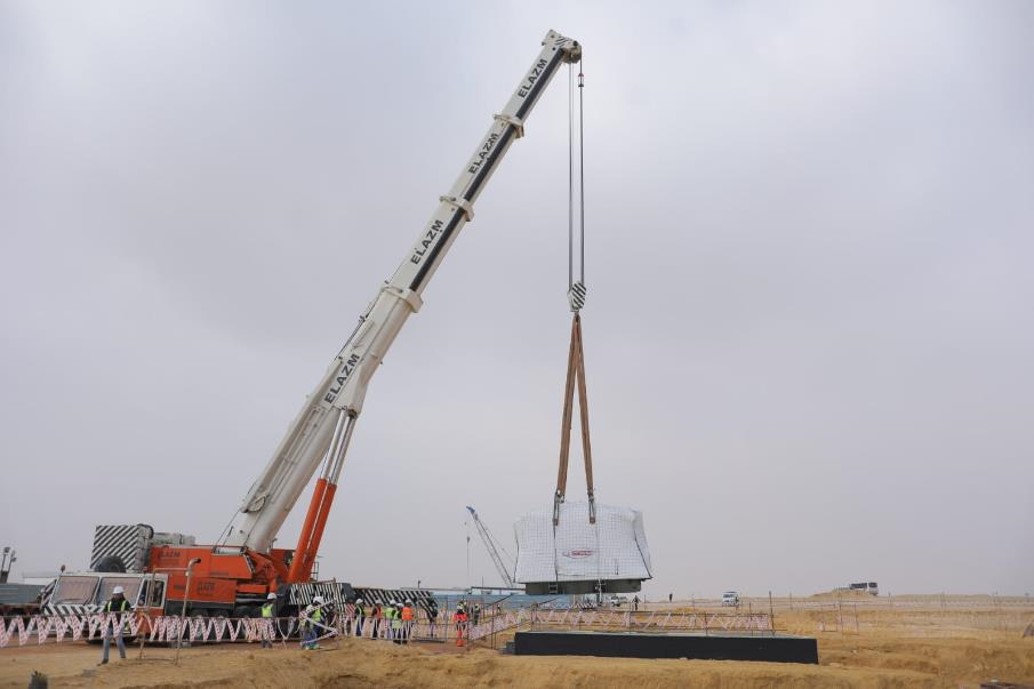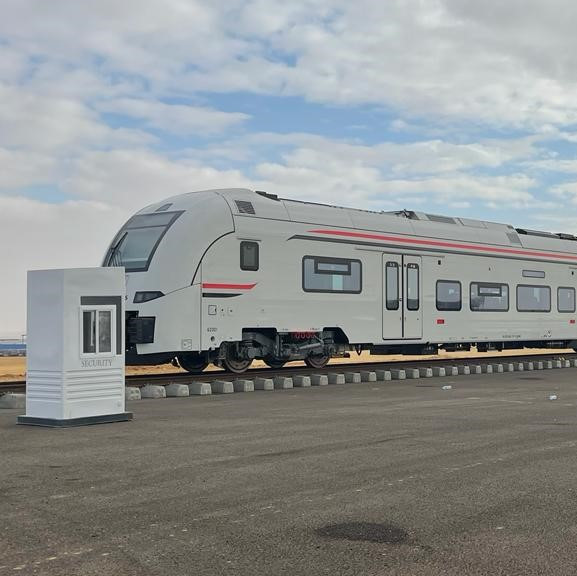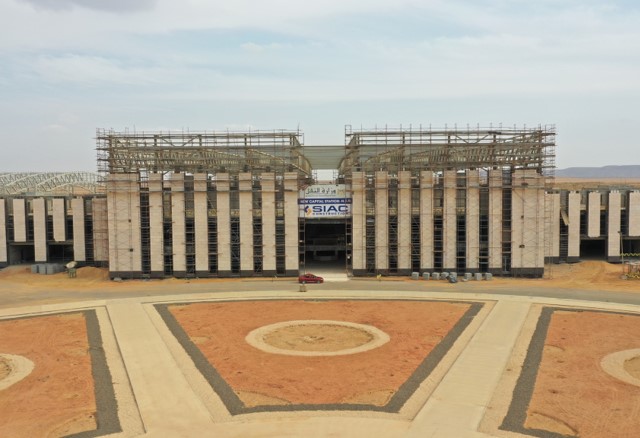
Green Line – the Suez Canal on rails
Covered with buyer credit cover, supplier credit cover and manufacturing risk cover
660 km from the Mediterranean to the Red Sea
In a pioneering project involving the construction of a fully electrified railway network for high-speed trains, Egypt wants to enable its population to switch to a modern and safe transport system. A total of three lines are to be built.
The first section known as the “Green Line” will connect the Mediterranean with the Red Sea and is therefore also being called the “Suez Canal on rails”. Connecting Cairo, New Capital and Marsa Matrouh, the 660-km long route is intended to shift freight and passengers from road to rail and thus make a contribution to the green transition and climate protection. The double-track railway line will include21 stations, a train depot and around 58 bridges and overpasses.
Siemens Mobility to supply the rolling stock and railway infrastructure
The Egyptian Ministry of Transport has commissioned the Siemens subsidiary Siemens Mobility GmbH and its consortium partners Orascom Construction and The Arab Contractors with the construction of the “Green Line” railway line. Under the terms of the project, Siemens is supplying regional and high-speed trains as well as electric locomotives. The German company is also providing the station and depot fittings, electrification, signalling technology and the communication system, among other things. While Siemens Mobility Germany is responsible for managing the overall project, Siemens Mobility Egypt will be providing local project management services. The consortium is also responsible for the maintenance of the infrastructure and the trains over a period of 15 years.

Shorter journey times and greater safety
In Egypt, serious train accidents occur time and again. Train cancellations and long delays are the order of the day because of the antiquated railway infrastructure, some of which dates back to the 19th century and does not meet current safety requirements. The construction of the freight and passenger lines aims to enhance the safety and reliability of rail travel.
The population will also benefit from improved connections and shorter journey times, which will be halved in duration. Travelling at speeds of up to 230 km/h, the new high-speed trains will carry more than 30 million passengers a year. The population in small towns and suburbs in particular will be able to reach their workplace, as well as educational and healthcare facilities more easily. Small and family businesses will be able to expand their business. The project will therefore improve the quality of life of the Egyptian population.
Reduction in greenhouse gases
Egypt is the largest emitter of carbon in Africa after South Africa (around 250 million tonnes of carbon, Statista 2023). Transport in particular is a major source of carbon emissions. In view of the high population growth in Egypt, road congestion will also continue to increase. The new railway lines will reverse this tend, as they will enable a large proportion of passenger and freight transport to be shifted from the road to rail. The result will be less congestion and lower emissions and therefore a reduction in the exhaust gases harmful for the climate. Compared to existing car and bus transport and non-electrified rail transport, the new rail system will emit 70% less carbon. The project will thus help Egypt to reach its ambitious goals of reducing greenhouse gases and becoming climate-neutral in the long term.

Total route network of 2,000 km planned
The entire “Green Line” railway line is scheduled to go into operation in 2027 and will be followed by further high-speed railway networks. The “Blue Line” will run from Cairo to Abou Simbel and the “Red Line” from Luxor to Safaga. The new rail network will thus connect all of Egypt’s major cities, giving around 90 per cent of the country’s population access to rail transport. The three routes will have a total length of around 2,000 kilometres. In fact, Egypt will have the world’s sixth largest high-speed railway network.
Photos: ©Siemens Mobility GmbH
The German federal government supports infrastructure projects
The German federal government is supporting the project by providing finance, which was applied for by a banking consortium of four European banks. In addition, it is issuing supplier credit and manufacturing risk cover for Siemens Mobility.
The German federal government’s foreign climate policy, which is enshrined in the coalition agreement, aims to support newly industrialising and developing countries in achieving their climate targets. This also entails the promotion by the German federal government of sustainable infrastructure projects. The construction of railway lines in Egypt is one of the many sustainable projects that the Federal Ministry for Economic Affairs and Energy is supporting in order to help reduce greenhouse gas emissions.
Back to project overview
